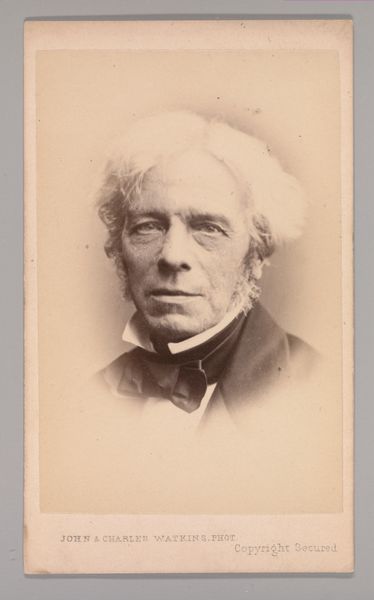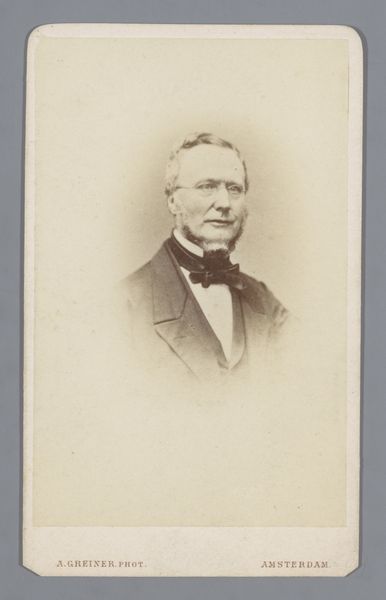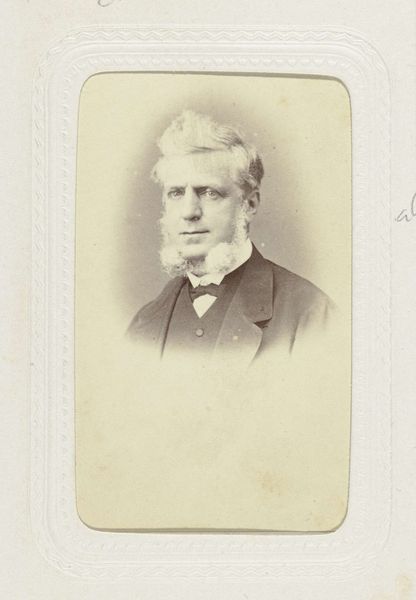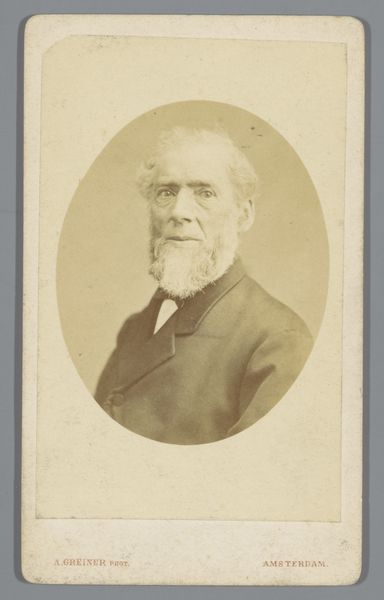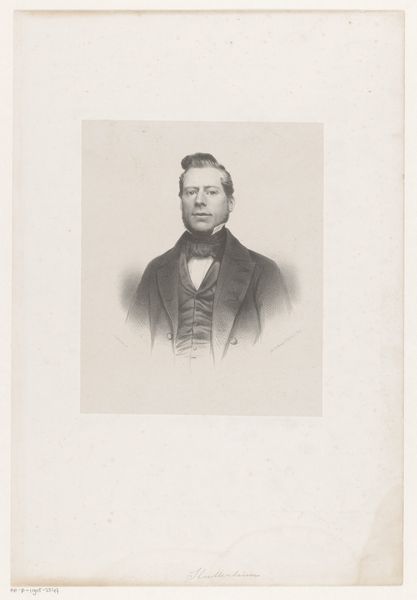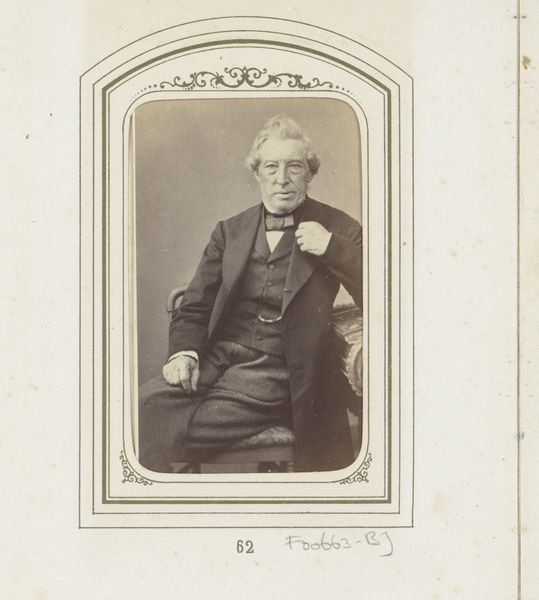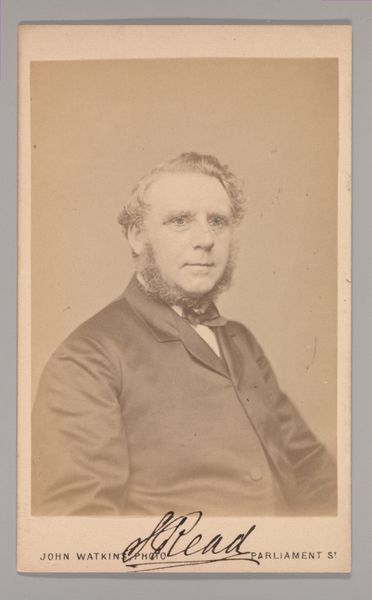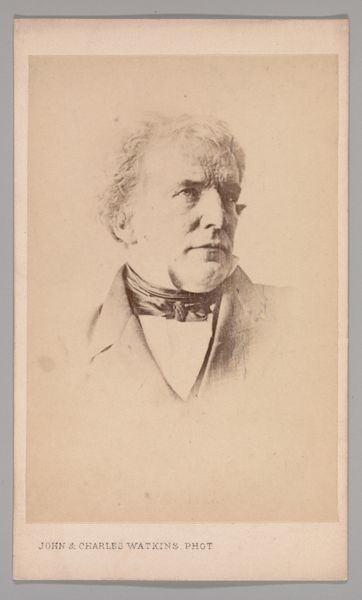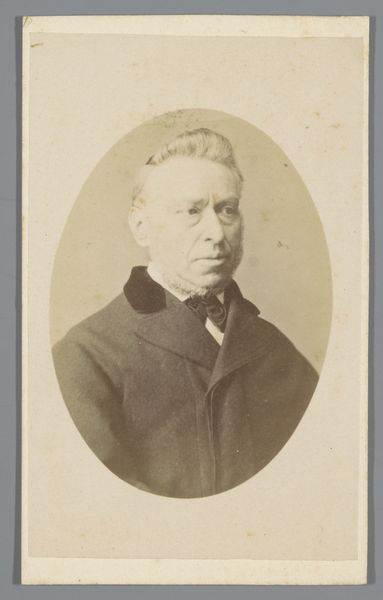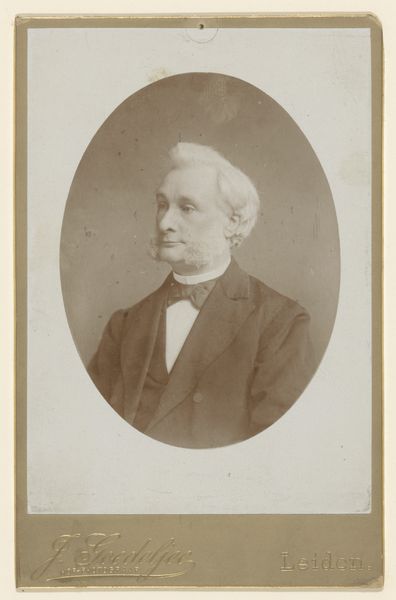![[William H. Robinson?] by John and Charles Watkins](/_next/image?url=https%3A%2F%2Fd2w8kbdekdi1gv.cloudfront.net%2FeyJidWNrZXQiOiAiYXJ0ZXJhLWltYWdlcy1idWNrZXQiLCAia2V5IjogImFydHdvcmtzLzJmNWE1NzEwLTc0ZmYtNGUyZS04NTU0LTg0ZGI2YTlmM2FmMC8yZjVhNTcxMC03NGZmLTRlMmUtODU1NC04NGRiNmE5ZjNhZjBfZnVsbC5qcGciLCAiZWRpdHMiOiB7InJlc2l6ZSI6IHsid2lkdGgiOiAxOTIwLCAiaGVpZ2h0IjogMTkyMCwgImZpdCI6ICJpbnNpZGUifX19&w=3840&q=75)
paper, photography, albumen-print
#
portrait
#
paper
#
photography
#
men
#
paper medium
#
albumen-print
Dimensions: Approx. 10.2 x 6.3 cm (4 x 2 1/2 in.)
Copyright: Public Domain
Curator: The quiet dignity of this piece really strikes me. Editor: Indeed. Here we have a portrait, likely of William H. Robinson, though the identification remains tentative. The work comes to us from the 1860s, a paper albumen print crafted by John and Charles Watkins. Curator: Albumen prints… that's fascinating. A process relying so heavily on egg whites. What can you tell us about that particular photographic process during this era? Editor: Well, the process was prevalent for its fine detail and ability to produce sharp images. However, it's worth considering that it was a laborious method involving many steps: coating paper with albumen, sensitizing it with silver nitrate, exposing the negative… The cost of materials and specialized labour shaped access and consumption of photographic images during this era. Curator: It adds another layer to this portrait of, let's call him Mr. Robinson, doesn't it? One can't separate the subject from the material and socioeconomic circumstances involved in creating his likeness. Considering he's donning what looks like a plaid scarf and jacket, would it be possible to deduce what profession or social standing Robinson may have held based solely on the attire shown within the portrait itself? Editor: Attire and photographic portraiture played a complex role during the Victorian era, constructing and reflecting social hierarchies. Men of Robinson’s presumed status often employed formal portraiture to project specific aspirations and ideals of respectability. It's all performative. Curator: This image certainly captures what I would imagine those values might embody, a dignified representation, almost stern, yet perhaps hinting at… vulnerability? How can we really discern a man's character from the gaze and formal, perhaps staged posture? Editor: That’s the heart of it. We see what they choose to present. Yet within that construct, questions persist. Who held power in that exchange: sitter, photographer, audience? It’s a nexus of gazes shaping and reshaping understandings. Curator: Well, examining the albumen print has made me look at portraits from an era beyond surface appearances. I am interested in what can be revealed from material composition of past artistry, whether intentional or incidentally disclosed. Editor: Likewise. Reflecting on the intersections of identity and photographic practice of the 1860s helps unveil broader cultural norms.
Comments
No comments
Be the first to comment and join the conversation on the ultimate creative platform.
